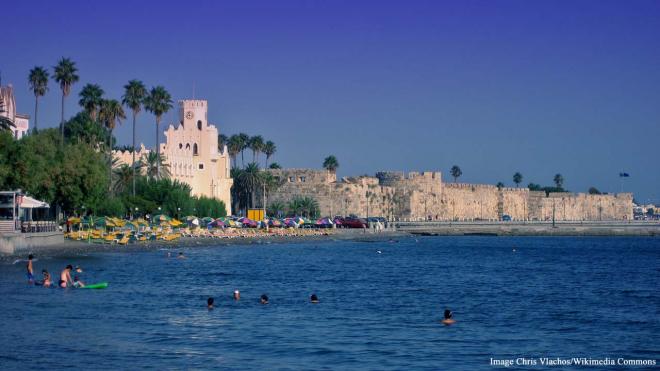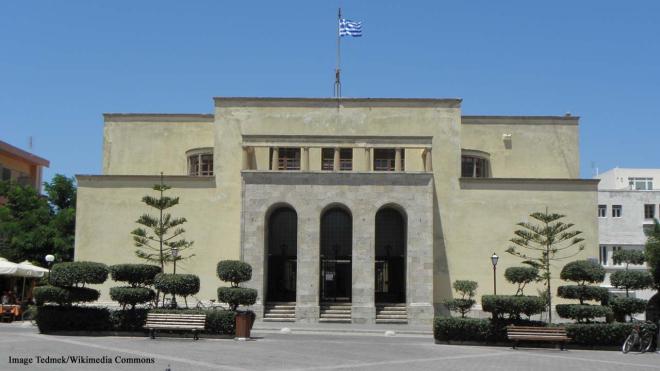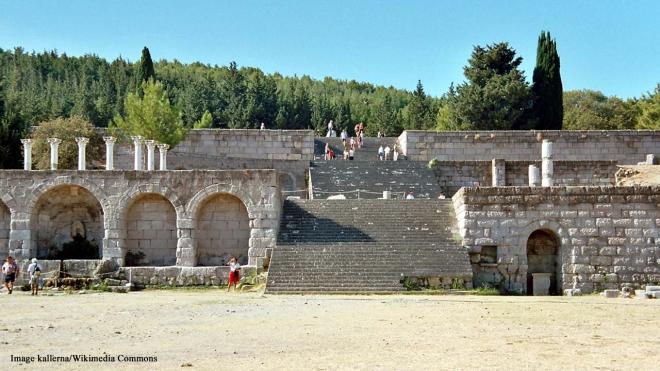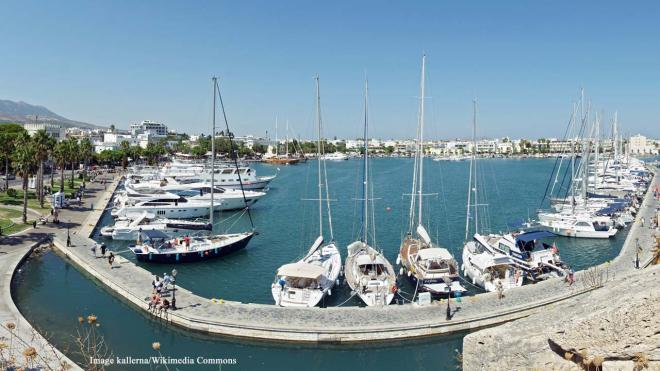Kos (or Cos) is one of the Dodecanese Islands of Greece. It lies in the south-eastern Aegean Sea, just off the Anatolian coast of Turkey. The island is famous for its sprawling sandy beaches and is rich in history, with the remains of many Roman and Greek landmarks, especially in the town of Kos itself and the surrounding area.
Kos Town is the main port of the island, with beautiful, whitewashed buildings and many restaurants. There is also lively nightlife available. Kardamena is another popular seaside resort, particularly with young holidaymakers, due to its many nightclubs and bars.
The following are some of the major attractions of Kos.
The beaches of Kos
The beaches of Kos are the primary tourism attraction of the island. There are many beautiful sandy coves overlooking crystal-clear water. Lambi is close to the city centre and is one of the best beaches, with plenty of tourism infrastructure and 1 km in length. Paradise Beach is among the most beautiful, as are Agios Stefanos, Therma, Mastichari, Tigaki and Helona.

Neratzia Castle (Castle of the Sour Orange Tree) - Kos Town
Kos Town is dominated by the Neratzia Castle (Castle of the Sour Orange Tree), which was constructed by the Knights Templar at the end of the 14th century. The reason for its name is the many sour orange trees planted during the late 14th century in the surrounding area. Of interest to note, the castle was restored during the Italian occupation period of the island and during the German occupation, it hosted the German garrison and was a prison for Greek patriots.

Kos Archaeological Museum
The Archaeological Museum on Kos is set in a 1936 building which dates from the Italian occupation of the island. Here can be seen many ancient island artefacts, mosaics and sculptures from the rich history and various eras of the island.

Kos Asclepeion
In Greek history, Asclepeions are healing temples, dedicated to Asclepius, a doctor-demigod in Greek mythology. Asclepius was believed to be a skilled doctor who could even raise people from the dead. Pilgrims used to flock to the Asclepeion seeking physical and spiritual healing.

Odeon, Kos
The name “Odeon” may seem familiar to cinema-goers, and for good reasons. The name was given to a number of Greek and Roman amphitheatres, built for entertainment. The Odeon on Kos is remarkably well-preserved and restoration work has made it what it is today.

Gymnasion, Kos
The Gymnasion is the ancient gymnasium of the island, dating back to the 3rd century BC. It is located near the entrance to the old town of Kos, close to the harbour. This is where athletes trained for the games and races. In later Roman times, a swimming pool was added and there was a water tank, where athletes washed themselves.

Kos Harbour
The Port of Kos lies in the natural harbour of the island and is used by ferries and tourist vessels traveling between the mainland and the island. In this area, the remains of the ancient port of Kos can be seen.

![Paradise beach in Kos, Greece [Image Anna & Michal/Flickr] Paradise beach in Kos, Greece [Image Anna & Michal/Flickr]](https://staticr1.blastingcdn.com/media/photogallery/2019/5/27/660x290/b_502x220x82/paradise-beach-in-kos-greece-image-anna-michalflickr_2270017.jpg)


